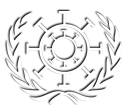On Lively Objects and Animated Things, on the Logic of Faith and Skepticism, on Mimetic Faculty and the Metamorphic Sublime, on Discourse and the Resonance of Ideas, on Signifiers and Mapping of Territories.
An Interview with Michael Taussig 30.05.2019
Michael Taussig discusses the shifting boundaries between humans and objects. That objects can be seen as a alive is not a radical break introduced by AI, but has a long history, both within technology (such as the historical mechanical Turk) as well as in culture more broadly.
This notion of lively objects is based on faith in the ability of the object (or the trickster handling it), and skepticism towards the tricks played. Faith and skepticism go hand-in-hand, as Evans-Pritchard noted in the 1930s in relation to magic. This double character is both a basis of power and a source for countervailing forces, a vantage point for leverage to say the opposite.
Underlying our relation to words is a mimetic faculty, which he explains as a reciprocal gift relationship, a key component of mutual understanding. Nevertheless instrumental mimesis can be used for the domination of nature, for profit and the power of rulers. Related to this is his conception of the metamorphic sublime as a dangerous and exciting process.
Therefore, discourse can never be reduced to flat core statements, but operates on multiple levels, such as atmosphere and the resonance of ideas. Sensitivity to the resonance of things of the world is of importance for people to turn into other adventures of ideas.
Against the arbitrariness of the signifiers and the Saussurean gap of representation, Taussig evokes the organic connection of language, where writing becomes what the writing is about and the map is the territory.
